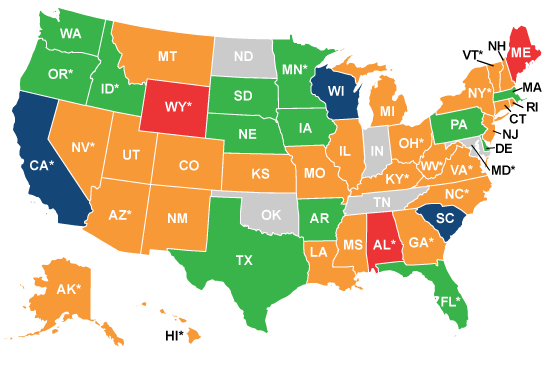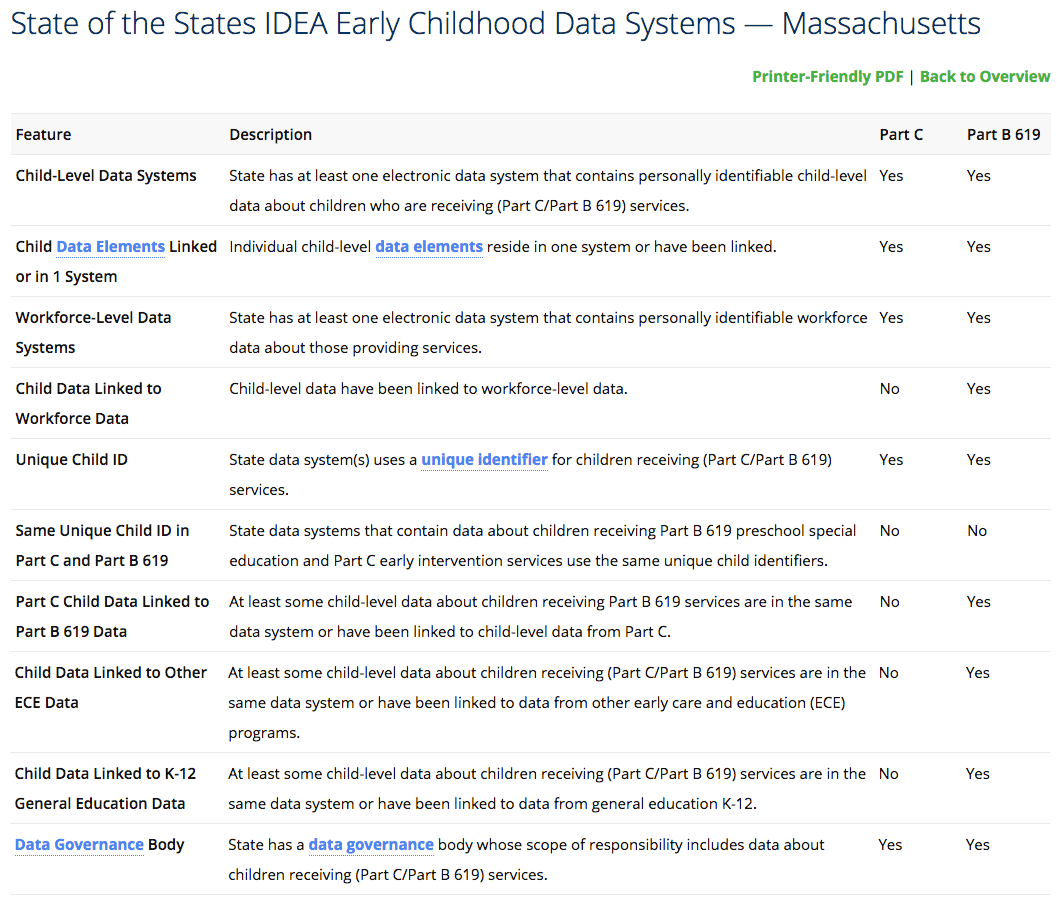We at Center for IDEA Early Childhood Data Systems (DaSy Center) are data fiends. We love this quote:
Data, I think, is one of the most powerful mechanisms for telling stories. I take a huge pile of data and I try to get it to tell stories.
-Steven Levitt, co-author, Freakonomics
One of the ways that we help to tell data stories is through our interactive State of the States maps. The data for our maps are based on information collected by the DaSy Center and the Infant Toddler Coordination Association (ITCA) from states in 2015. Individual state information is presented with permission from authorized state Part C and Part B 619 staff. They are used by state personnel and DaSy technical assistance providers to guide the work we do together to develop and enhance high quality data systems.
Here’s an example of one way a state might use our maps to guide their work:
Who is already doing what I want to do?
Imagine that your state is developing a formal data governance body, and you want to understand how common this is in other states. Simply click on the tab for Data Governance Body:

The color coding tells you that 13 states have data governance bodies for in both their Part C and Part B 619 state agencies, and that among the remaining states more Part B 619 programs than Part C programs have data governance bodies. To get more information about one of those states, simply click on the state itself to get to a chart displaying all ten elements of information about the state:

What factors does your state have in common with Massachusetts? Would this be a good peer state to reach out to for help in your efforts? If not, you can always go back and look at another state.
The data points we display
DaSy’s maps include state-reported data about Part C and Part B 619 regarding ten different data system “features” for all 50 states, the District of Columbia, Puerto Rico, the U.S. Virgin Islands, American Samoa, Guam, and the Northern Mariana Islands:
- State has at least one electronic data system that contains personally identifiable child-level data about children who are receiving Part C/Part B 619 services.
- Individual child-level data elements reside in one system or have been linked.
- State has at least one electronic data system that contains personally identifiable workforce data about those providing services.
- Child-level data have been linked to workforce-level data.
- State data system(s) uses a unique identifier for children receiving (Part C/Part B 619) services.
- State data systems that contain data about children receiving Part C early intervention and Part B 619 preschool special education services use the same unique child identifiers.
- At least some child-level data about children receiving Part B 619 services are in the same data system or have been linked to child-level data from Part C.
- At least some child-level data about children receiving Part C/Part B 619 services are in the same data system or have been linked to data from other early care and education (ECE) programs.
- At least some child-level data about children receiving Part C/Part B 619 services are in the same data system or have been linked to data from general education K-12.
- State has a data governance body whose scope of responsibility includes data about children receiving Part C/Part B 619 services.
What happens next?
You can always reach out to our technical assistance providers to help to build a better data story. We offer a variety of tools, including a state self-assessment, all of which are all grounded in our Data Systems Framework:

But that’s another story . . .


